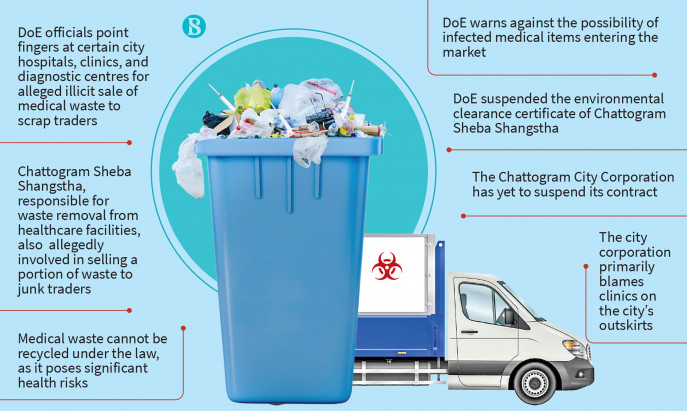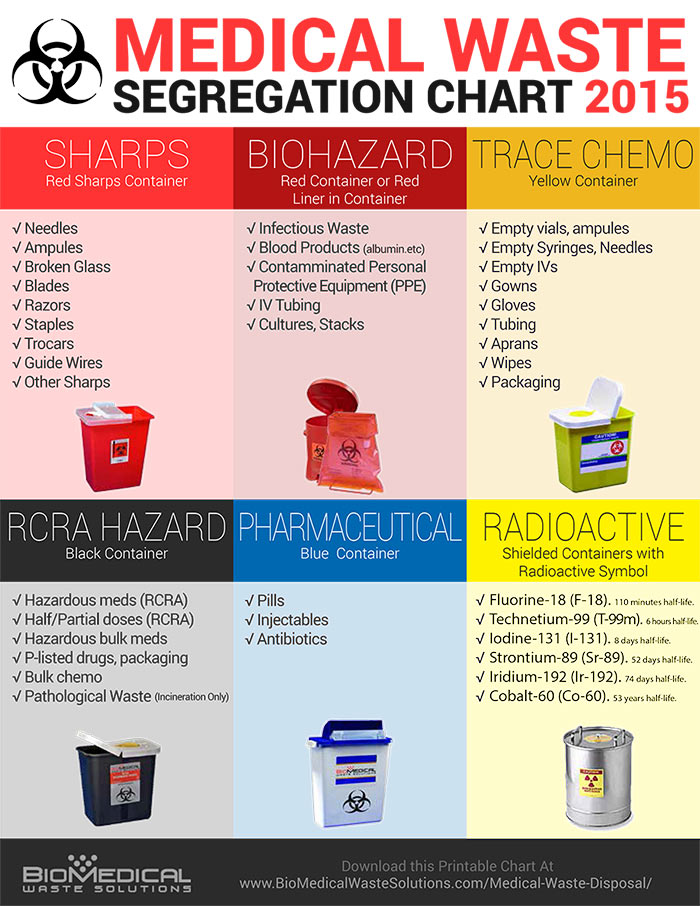Medical Waste Removal Excellence: Elevating Safety Requirements in Your Facility
Minimize Prices and Make Best Use Of Security: Effective Medical Waste Disposal Strategies
Efficient medical waste disposal approaches are important for medical care facilities to reduce expenses and make the most of safety and security. By implementing correct partition and classification, reliable product packaging and labeling, secure transport and handling, reliable treatment and disposal techniques, and conformity with governing guidelines, healthcare facilities can make certain the safe and liable monitoring of medical waste.

Proper Partition and Categorization
Proper partition and categorization are essential parts of efficient medical garbage disposal strategies, guaranteeing the safety and security of medical care workers, the public, and the atmosphere - medical waste removal services. medical waste disposal services with WasteX. By dividing various types of clinical waste at the point of generation, health care facilities can minimize the danger of cross-contamination and possible injury to people and environments
One of the crucial consider proper segregation is the identification and category of medical waste. This involves classifying waste right into different groups, such as infectious, harmful, radioactive, or pharmaceutical waste. Each category needs details handling, storage space, and disposal techniques to avoid any type of damaging effects on human health and the setting.
Additionally, appropriate partition also includes the usage of color-coded containers and labels to plainly identify and distinguish the numerous kinds of clinical waste. This assists health care workers and waste management employees to easily identify and handle the waste suitably. Red containers might be made use of for infectious waste, while yellow containers may be assigned for hazardous waste.
Along with segregation, appropriate classification also entails the right packaging and control of medical waste. This makes sure that waste is safely saved and transferred without presenting any threats to people or the setting. Making use of puncture-resistant and watertight containers, as well as properly securing and labeling them, helps to avoid any unexpected exposure or release of dangerous substances.
Efficient Product Packaging and Labeling
Efficient packaging and labeling play an essential role in making sure the safe and efficient disposal of medical waste. Appropriate product packaging is vital to avoid leakage, damage, or splilling throughout transport and handling. It assists to decrease the risk of contamination and safeguards health care workers, waste management personnel, and the environment from potential threats.
Clinical waste ought to be packaged in watertight and sturdy containers that are immune to puncture and breakage. These containers ought to be correctly secured to avoid any type of leak. Furthermore, the product packaging must have the ability to withstand the problems of transport, including temperature variations and misuse.
Identifying is just as essential as it gives vital info about the materials of the waste and any type of possible threats connected with it. The tags ought to consist of the name of the healthcare center, the kind of waste, and any special delivery guidelines. Standardized and clear labeling makes sure that waste administration personnel can quickly identify and manage the waste appropriately.
Efficient product packaging and labeling additionally aid in the proper segregation and categorization of clinical waste. Clear labeling enables for very easy recognition of various waste streams, such as transmittable waste, sharps, or pharmaceutical waste. This helps in improving the disposal process and making certain that the waste is treated or taken care of according to governing standards.
Safe Transportation and Handling
Making certain the risk-free transport and handling of medical waste is of utmost value in order to protect against any prospective health and environmental dangers. Clinical waste, such as sharps, infected materials, and pharmaceutical waste, must be appropriately packaged and managed to reduce the danger of exposure to dangerous compounds and pathogens.
Delivering clinical waste calls for compliance with rigorous policies and guidelines established by neighborhood authorities and ecological firms. These policies intend to shield the wellness and safety of workers associated with waste management and avoid the launch of dangerous materials into the setting.
To ensure safe transport, clinical waste ought to be placed in leak-proof and puncture-resistant containers that are appropriately sealed and classified. Furthermore, it is vital to utilize specific cars outfitted with proper security attributes to transport medical waste. medical waste disposal services with WasteX.
Handling clinical waste additionally needs proper training and adherence to safety and security procedures. Employees involved in the handling of medical waste should use ideal individual protective devices (PPE) such as masks, handwear covers, and gowns to minimize the danger of direct exposure. They should additionally follow strict health methods to Home Page prevent the spread of infections and make sure the secure disposal of waste.
Reliable Therapy and Disposal Methods
Carrying out appropriate treatment and disposal methods is vital in handling medical waste efficiently and minimizing potential wellness and ecological dangers. Clinical waste, which consists of sharps, transmittable materials, chemicals, and pharmaceuticals, can posture significant risks otherwise managed and taken care of properly. There are a number of therapy and disposal methods available that follow regulatory standards and advertise risk-free methods.
One typical method is incineration, which entails melting the waste at high temperatures. Incineration works in damaging pathogens and reducing the quantity of waste, yet it can launch damaging pollutants into the air if not properly managed. Therefore, it is necessary to utilize modern-day burners furnished with discharge control technologies.
Another technique is autoclaving, which utilizes steam and stress to sterilize the waste. Autoclaving works in eliminating virus and reducing the quantity of waste, but it needs from this source mindful surveillance and maintenance to ensure correct functioning. The decontaminated waste can after that be securely taken care of in a garbage dump.
Chemical treatment is an additional choice, which includes using anti-bacterials or various other chemicals to neutralize virus. This method is typically made use of for liquid waste, such as laboratory samplings. It is important to use appropriate chemicals and follow correct treatments to make sure efficient treatment and prevent environmental contamination.

Conformity With Regulatory Standards
Complying with governing guidelines is necessary in ensuring proper compliance with medical garbage disposal techniques. These standards are put in location to protect public wellness, stop ecological contamination, and keep office security. Compliance with regulatory guidelines is important for healthcare facilities, as non-compliance can cause penalties, penalties, and reputational damage.
Governing guidelines outline the proper handling, storage, transportation, and disposal of clinical waste. These standards also resolve the segregation of different waste streams, such as sharps, transmittable waste, and pharmaceutical waste.
To maintain compliance, health care centers need to establish thorough waste click this link administration programs that consist of personnel training, regular audits, and continuous monitoring. It is important to maintain current with any type of adjustments or updates to regulatory standards, as methods may evolve with time. By staying educated and implementing correct protocols, health care centers can reduce the potential for regulatory violations and protect the wellness and security of their team, clients, and the bordering neighborhood.
Verdict
To conclude, executing reliable medical garbage disposal methods is critical for making best use of and reducing prices security. Correct partition and classification, reliable packaging and labeling, secure transportation and handling, and efficient therapy and disposal techniques are vital steps to ensure conformity with governing guidelines. medical waste removal. By adhering to these methods, medical care centers can protect the environment and public health and wellness while likewise minimizing financial concerns connected with clinical waste management
By executing proper partition and categorization, reliable packaging and labeling, risk-free transportation and handling, reliable treatment and disposal methods, and compliance with regulative guidelines, health care facilities can make sure the risk-free and responsible administration of clinical waste. Red containers may be utilized for infectious waste, while yellow containers might be assigned for harmful waste.
Standardized and clear labeling makes certain that waste management employees can conveniently determine and deal with the waste properly. (medical waste disposal services with WasteX)
Clear labeling allows for simple identification of different waste streams, such as infectious waste, sharps, or pharmaceutical waste. These guidelines additionally resolve the partition of various waste streams, such as sharps, transmittable waste, and pharmaceutical waste.